Praise for Men Still at Work
Should you work beyond normal retirement age? Men Still at Work answers important questions and offers encouragement for people who want to remain in the workforce for years... or decades. Douglas Goldstein , Profile Investment Services
I, like many elders I know, am still working because I love what I do and I feel I have knowledge and experience to offer anyone interested. Its a beautiful thing to be a musician still able to perform, compose, and educate at the age of eighty-seven. This is a must-read for someone looking for a road map. Jimmy Heath , professor emeritus, Queens College; jazz saxophonist, composer, and arranger
We will need to know more about the labor force involvement of Americans over age sixty-fivebecause this segment of the population will continue to grow, because this stage will represent a greater portion of our lives, and because this group will increasingly impact our economy and culture. Elizabeth Fideler offers us engaging and highly readable stories of men who continue to work while the majority of their cohort has retired, which complements her earlier study of working women in this age group. These accounts remind us of the importance of meaning and engagement at work, and not just for the elderly. Jerry A. Jacobs , University of Pennsylvania
Men Still at Work
Professionals over Sixty and on the Job
Elizabeth F. Fideler
Rowman & Littlefield
Lanham Boulder New York Toronto Plymouth, UK
Grateful acknowledgment is made for permission to reprint excerpts from the following copyrighted works:
From AGING WELL by George E. Vaillant, M.D. Copyright 2002 by George E. Vaillant, M.D. Used by permission of Little, Brown and Company. All rights reserved.
From BORN TO RUN: A HIDDEN TRIBE, SUPERATHLETES, AND THE GREATEST RACE THE WORLD HAS NEVER SEEN by Christopher McDougall. Courtesy of Random House.
From TOWNIE: A MEMOIR by Andre Dubus III. Courtesy of W. W. Norton Company.
Published by Rowman & Littlefield
4501 Forbes Boulevard, Suite 200, Lanham, Maryland 20706
www.rowman.com
10 Thornbury Road, Plymouth PL6 7PP, United Kingdom
Copyright 2014 by Rowman & Littlefield
All rights reserved . No part of this book may be reproduced in any form or by any electronic or mechanical means, including information storage and retrieval systems, without written permission from the publisher, except by a reviewer who may quote passages in a review.
British Library Cataloguing in Publication Information Available
Library of Congress Cataloging-in-Publication Data
Fideler, Elizabeth F.
Men still at work : professionals over sixty and on the job / Elizabeth F. Fideler.
pages cm
Includes bibliographical references and index.
ISBN 978-1-4422-2275-5 (cloth : alk. paper) ISBN 978-1-4422-2276-2 (electronic) 1. Older menEmploymentUnited States. 2. Professional employeesUnited States. 3. Retirement ageUnited States. 4. Age and employmentUnited States. I. Title.
HD6280.F53 2014
331.3'980973dc23
2013040402
 The paper used in this publication meets the minimum requirements of American National Standard for Information SciencesPermanence of Paper for Printed Library Materials, ANSI/NISO Z39.48-1992.
The paper used in this publication meets the minimum requirements of American National Standard for Information SciencesPermanence of Paper for Printed Library Materials, ANSI/NISO Z39.48-1992.
Printed in the United States of America
Acknowledgments
I am very grateful to all 156 professionals who completed my survey, especially the thirty-three men who so generously gave their time for in-depth interviews and profile editing as well as those who forwarded the survey on my behalf to older working men around the country.
Many other people offered strong encouragement for the project and helped to recruit survey participants, including: Charles V. Willie, Mary Coleman, Barbara Resnek, Carolyn Kiradjieff, Allan Shedlin, Sam Klaidman, Richard Winslow, Henry Field, John Willett, Jeremy Freund, Richard Eisenberg, Ruth Winett, Ann Kaganoff, Sharon Caballero, Gayle Rich, Judith Zorfass, Vernise Cardillo, Elise Savage, Maxine Greenwald, Ann Arvedon, Esther Novak, Ann Chuk, Linda Nilson, Barbara Millis, Diane Sasson, Judith Stames-Hamilton, Nancy Weibust, Katherine Eyre, Elaine Cooke, Mary Antes, Jean Canellos, Judith Mir, Patricia Hartney, Lisa Shapiro, Lila Packer, Richard Pomerance, Tom Lazarus, Andrew Fogelson, and Louis Nemser.
Research progressed faster with help from the Sloan Center on Aging and Work at Boston College and John Collins III and Marcella Flaherty at Harvards Gutman Library.
Sarah Stanton, Kathryn Knigge, Lisa McAllister, and colleagues at Rowman & Littlefield worked their publishing magic.
My husband, Paul, gave up his home office and moved to the dining room (my office) so I could finish the book. For that sacrifice and for his unwavering support, I am forever thankful.
Introduction
Real success is finding your lifework in the work that you love.David McCullough, Historian
Wall Street is said to be buoyant. Corporate profits as a share of national income are at a record high last seen in 1950. At the same time, job growth remains stalled and 700,000 layoffs are anticipated as $85 billion in automatic cuts to the federal budget (sequestration) kick in. In this thorny context, it is remarkable that labor force growth rates for older men and older women, taken separately or combined, are greater than for any of the younger groups participating in or endeavoring to participate in the US workforce. This phenomenon can be explained only partially by Americans greater longevity and by the arrival of the leading edge of the baby boomer cohort in the senior ranks. There is far more to it.
Men Still at Work: Professionals over Sixty and on the Job shows how older men are prospering in the paid workforce, particularly those who are well educated and in professional jobs, despite the recession of 20079 and the economic downturn that has persisted in its wake. (The recession may have ended and the stock market appears to have recovered, yet employment has not rebounded to former levels, home foreclosures are still numerous, and credit remains extremely tight.) Older men are the second -fastest growing segment of the US labor force because the participation rate of older females is even higher. This book highlights important factors that are sparking this phenomenon and influencing the timing of retirement for older men. It uncovers their reasons for opting to work well past conventional retirement age, for example, contributing experience, know-how, and institutional knowledge, not just making money (which some excel at doing)and tells how they balance the demands of work, family, and the wider community with personal interests and needs . And, throughout, it makes a special point of comparing the genders on such measures as career field, length of career, time out for caregiving, employment status, and earning power. It identifies similarities and differences in the careers of older men and womenin particular, who and what influenced or encouraged them along the way and what motivates them to continue working. In so doing, it continues the narrative presented in Women Still at Work: Professionals over Sixty and on the Job .
Many well-known American men work past conventional retirement age. Composer Elliott Carter, who died recently at 103, worked almost to the very end of his life. Seth Glickenhaus, a ninety-eight-year-old money manager who started his career on Wall Street as a messenger, is in the process of selling his advisory firm to a firm led by retirement money manager Marvin Schwartz, who is a mere seventy-two. Tom and Ray Magliozzi of Car Talk and Good News Garage fame are seventy-six and sixty-four, respectively, and still working even though they are not making new radio shows. Framinghams Danforth Museum of Art recently featured the work of ninety-year-old Bostonian John Wilson, the sculptor whose bronze bust of Martin Luther King Jr. stands in the Rotunda of the US Capitol. (On Inauguration Day, President Obama paused in the Capitol Rotunda in front of Wilsons dignified bust of Dr. King.) More than half of the members of the US Senate are in their sixties, seventies, and eighties, including Chuck Grassley, eighty, and Carl Levin, seventy-nine. Forty-seven of the senators age sixty or older are men and twelve are women.
Next page
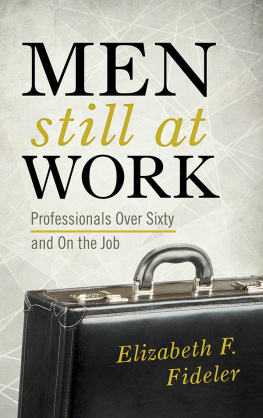
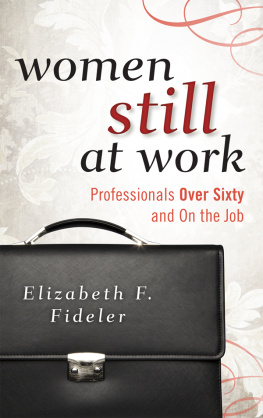

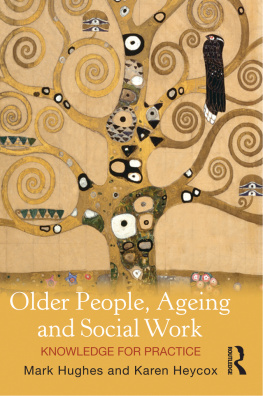
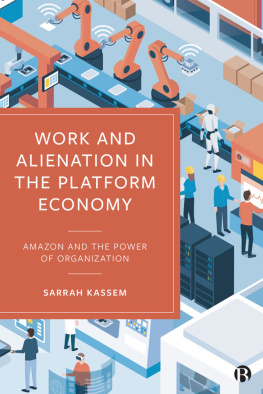
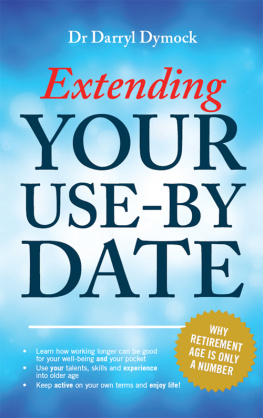
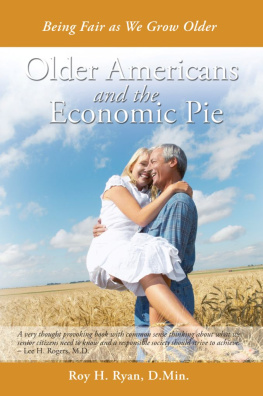
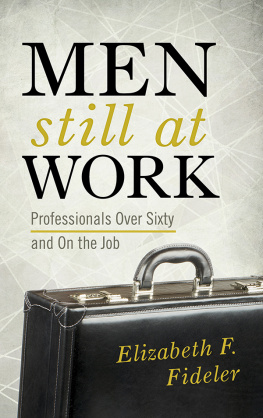
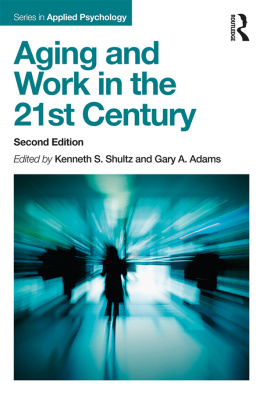
 The paper used in this publication meets the minimum requirements of American National Standard for Information SciencesPermanence of Paper for Printed Library Materials, ANSI/NISO Z39.48-1992.
The paper used in this publication meets the minimum requirements of American National Standard for Information SciencesPermanence of Paper for Printed Library Materials, ANSI/NISO Z39.48-1992.